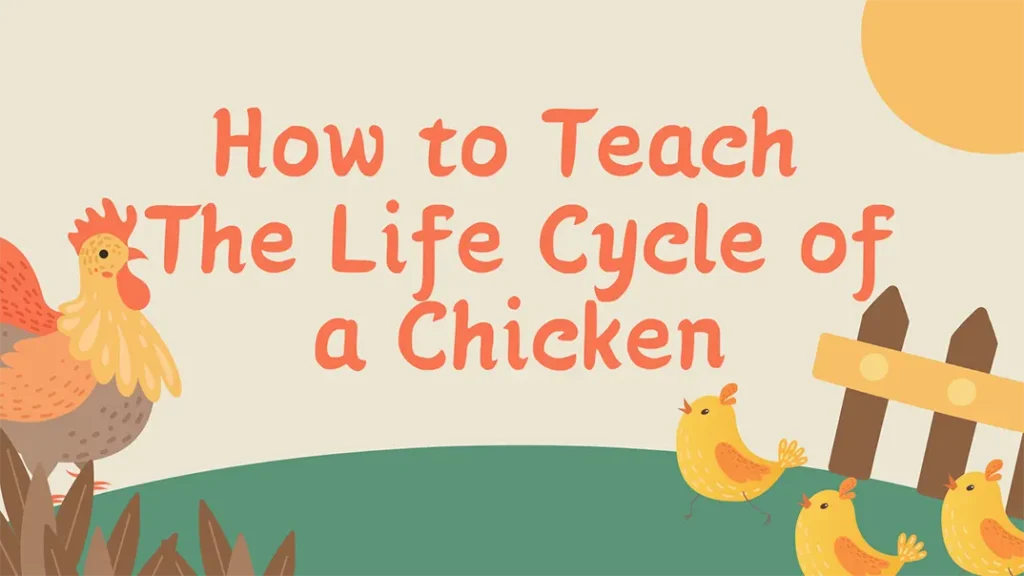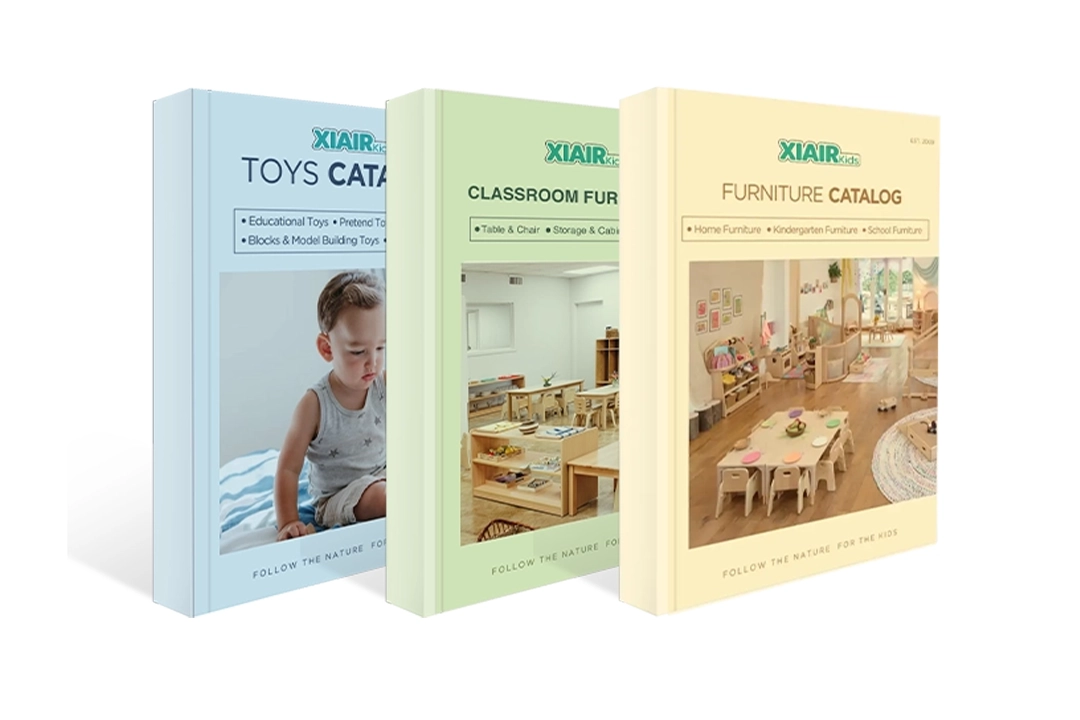Understanding where animals come from is often abstract for young children. When they see a chick hatch from an egg, the connection between life and growth becomes real. This is the power of teaching the life cycle of a chicken.
The process is simple yet filled with wonder, and it connects perfectly with early learning goals. It helps children grasp early science concepts through something they can see, touch, and relate to emotionally.
This article will walk you through how to present each stage with age-appropriate language, classroom activities, and materiali didattici that make science come alive.
What Is the Life Cycle of a Chicken?
The life cycle of a chicken is a repeating pattern that shows how a chicken grows and changes over time. It starts with an egg and goes through several stages before the chicken becomes an adult that can lay eggs of its own. This cycle helps children understand the concept of growth and the idea that living things change as they get older.
For preschoolers, the life cycle can be simplified into four basic stages: egg, hatching, chick, and adult chicken. Each stage is easy to identify and can be supported with visuals, props, and simple language. This makes it a perfect topic for early childhood science lessons.
The Five Stages of the Life Cycle of a Chicken
The life cycle of a chicken can be divided into five simple stages that are easy for preschoolers to understand. Each stage helps children explore the concept of growth, change, and new beginnings. By learning about these stages in order, children begin to see how one form of life leads to the next.
- Egg Stage
The cycle begins with an egg. Inside the shell, a baby chick is slowly forming. The egg must stay warm and protected so the chick can grow. This is a great time to show children real eggs or safe models and talk about what might be happening inside. - Embryo Development
As days pass, the chick inside the egg begins to take shape. It forms a beak, wings, and tiny feet. This part of the process is called embryo development. While children cannot see this with their eyes, they can learn about it through pictures and age-appropriate diagrams. - Hatching
After about 21 days, the chick is ready to come out. It starts pecking at the shell from the inside. This is called hatching. Children are often amazed by this stage because they can watch the moment a new life begins. It teaches patience and care. - Chick Stage
Once out of the shell, the baby chick is small, soft, and in need of warmth. It begins to walk and chirp. During this stage, children can learn about how the chick eats, drinks, and stays safe. They can also compare a chick to an adult chicken and notice the differences. - Adult Chicken Stage
As the chick grows, it develops feathers and becomes either a hen or a rooster. This adult chicken will one day lay eggs or fertilize them, starting the cycle again. By the end of this stage, children understand that the life cycle is a repeating process.
Why Teach the Life Cycle of a Chicken?
Introducing the life cycle of a chicken in a preschool setting offers a meaningful way to connect children with the natural world. It allows them to observe how living things grow and change over time, building early science skills in a way that feels real and engaging.
Chickens are familiar animals to many children, whether through storybooks, farm visits, or mealtime conversations. This familiarity makes it easier for them to relate to the stages of development. When children learn that a fluffy chick comes from an egg and eventually becomes an adult chicken, they begin to understand the concept of transformation in living organisms.
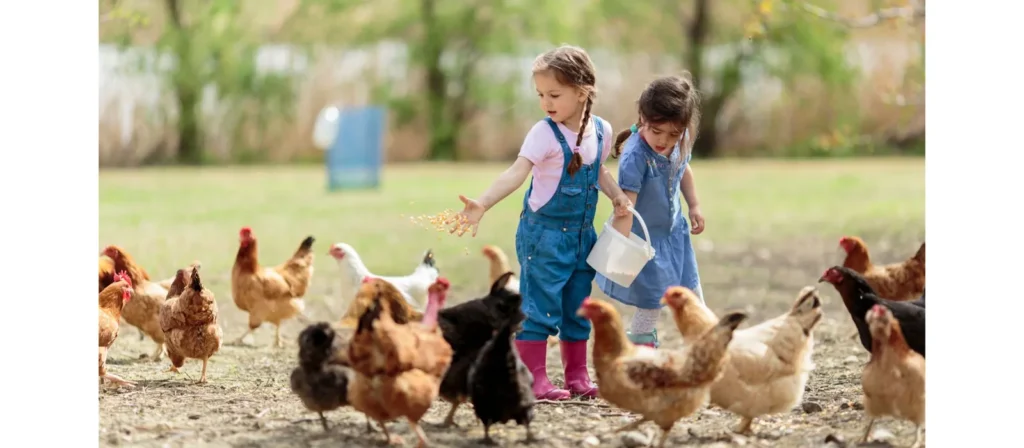
Teaching the life cycle of a chicken also supports curiosity, observation, and empathy. Children become more thoughtful when they learn to care for something small and delicate. Whether using plastic eggs, visual charts, or real chick hatching kits, teachers can guide students to ask questions, make predictions, and share what they see.
This topic is more than just a science lesson. It lays the groundwork for lifelong thinking habits by encouraging children to notice changes, express their ideas, and value the process of life itself. It turns a simple egg into a powerful tool for early learning.
Non limitarti a sognarlo, progettalo! Parleremo delle tue esigenze di arredamento personalizzato!
Vocabulary Words for the Life Cycle of a Chicken
Introducing new vocabulary helps preschoolers better understand the life cycle of a chicken. By using simple definitions and real-life connections, teachers can support language development alongside science learning. These key terms are important for building a strong foundation in both subject areas.
- Egg: The first stage of the life cycle, where a baby chick begins to grow inside a protective shell.
- Shell: The hard outer layer of the egg that protects the embryo and keeps it safe.
- Membrane: A thin protective layer inside the shell that prevents bacteria from entering and keeps moisture inside the egg.
- Air Cell: A small air pocket inside the egg that the chick uses to breathe just before hatching.
- Yolk: The nutrient-rich yellow part of the egg that feeds the developing embryo.
- Albumen (Egg White): The clear, jelly-like substance that cushions the embryo and provides water and protein.
- Embryo: The developing baby chick that forms body parts and grows inside the egg before hatching.
- Incubator: A machine for egg development that provides warmth and protection until chicks hatch.
- Egg Tooth: A small, sharp bump on a chick’s beak that helps it crack open the eggshell during hatching.
- Hatch: The moment of emergence when a chick uses its egg tooth to break through the shell and come out.
- Chick: A newly hatched baby chicken that is small, soft, and needs warmth, food, and care to grow.
- Down: The soft, fuzzy feathers on a baby chick that help keep it warm right after it hatches.
- Brooder: A warm, safe enclosure where baby chicks live after hatching until they can stay warm on their own.
- Beak: The hard, pointed part of a chick’s face that helps it eat food and break the eggshell.
- Hen: An adult female chicken that lays eggs and starts the cycle again.
- Rooster: An adult male chicken that fertilizes the eggs so new chicks can develop.
- Comb: The red, bumpy part on top of a chicken’s head, usually larger on roosters.
- Wattle: The red skin hanging below a chicken’s beak that helps it stay cool.
- Cluck: The sound a hen makes to talk to her chicks or alert others.
- Life Cycle: The complete growth process from egg to adult chicken and back to egg again.
Fun Facts About Chickens
Adding fun facts to your lesson helps spark children’s curiosity and makes the topic more memorable. Preschoolers love surprising information, and these simple, age-appropriate facts can inspire questions, conversations, and a deeper interest in how chickens live and grow.
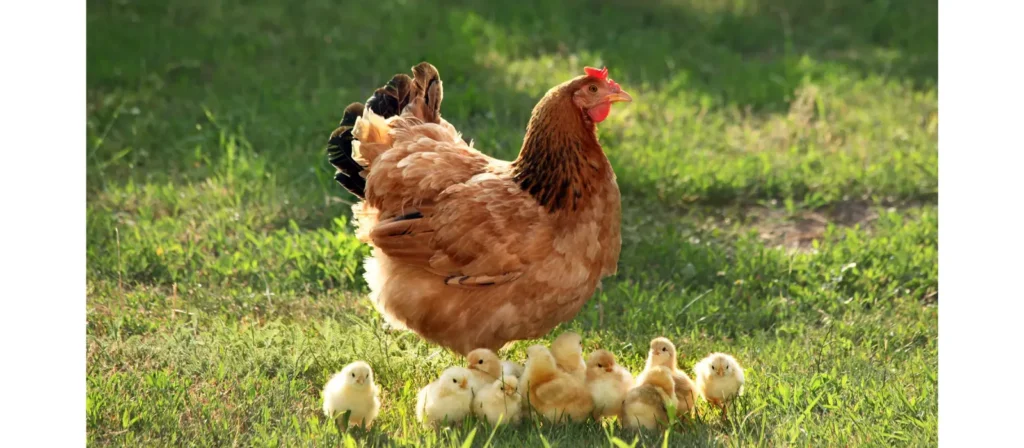
- Chickens Can Remember Faces: Chickens are smarter than many people think. They can recognize and remember more than 100 different faces, including people and other animals.
- Baby Chicks Talk Before They Hatch: Even before they break out of the egg, chicks peep and chirp to communicate with their mother hen and siblings.
- A Hen Can Lay Hundreds of Eggs Each Year: Most hens lay about 250 to 300 eggs every year, often one almost every day.
- Chickens Have Their Own Language: Chickens make over 30 different sounds to communicate. They have unique calls for warning about predators, finding food, or calling their chicks.
- They Take Dust Baths to Stay Clean: Instead of water, chickens roll in dry dirt or dust to keep their feathers clean and free of pests.
- Chickens Dream Like Humans: When they sleep deeply, chickens experience rapid eye movement (REM) sleep, which means they can dream just like we do.
- A Rooster Protects the Flock: Roosters keep watch for danger and use special calls to warn hens and chicks when a predator is near.
- Chicks Grow Very Quickly: Baby chicks grow fast, often doubling in size within their first week of life.
- Chickens Are Social Animals: They like to live in groups and have a social order called a “pecking order,” where each chicken knows its place in the group.
- The World’s Oldest Chicken Lived More Than 20 Years: While most chickens live for about five to eight years, one famous chicken lived to be more than two decades old.
Non limitarti a sognarlo, progettalo! Parleremo delle tue esigenze di arredamento personalizzato!
How to Teach the Life Cycle of a Chicken in the Classroom?
Teaching the life cycle of a chicken offers a unique opportunity to combine science, vocabulary, observation, and care into one engaging unit. With thoughtful preparation, preschool teachers can turn this topic into a hands-on experience that encourages critical thinking and meaningful exploration.
1. Create Interactive Classroom Science Centers
Design a classroom science area where children can explore the life cycle independently. Include materials such as magnifying glasses, eggshell samples, plastic life cycle models, puzzles, and sequencing cards. Rotating the materials each week keeps their curiosity active and encourages repeated exploration, which deepens understanding over time.
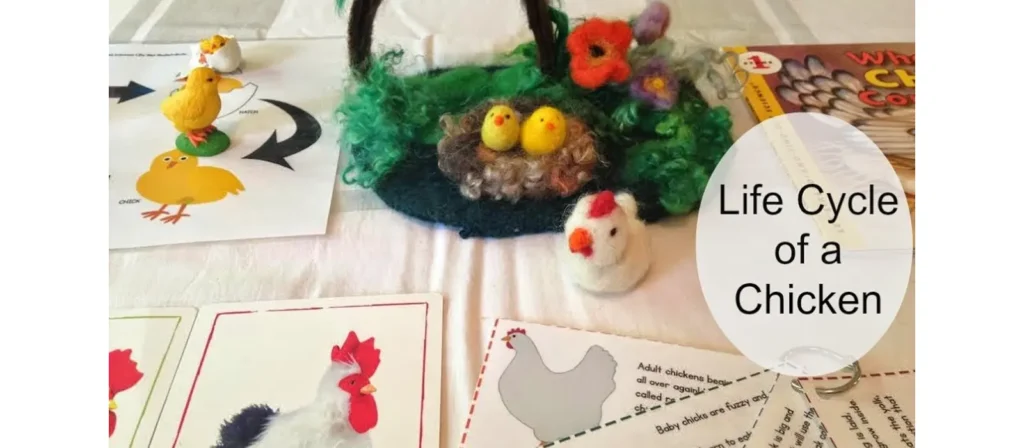
2. Begin with Visual Introductions and Simple Explanations
Start by presenting the concept using age-appropriate visuals such as storybooks, flashcards, diagrams, or short videos. These materials help children visualize each stage, including the egg, embryo, hatching, chick, and adult, while also introducing essential vocabulary. Using real photographs together with illustrations makes the concept more meaningful and easier to understand.
3. Tell the Chicken Life Cycle Story Step by Step
Transform the scientific process into a simple narrative that preschoolers can follow. Explain it as a story where the hen lays an egg, the chick develops inside, hatches, and then grows into an adult that lays new eggs. Storytelling helps children understand sequencing and cause-and-effect relationships while improving their language skills.
4. Use Hands-On Exploration and Observation
Young children learn best when they can touch, observe, and interact with real objects. Allow them to observe eggs, examine diagrams showing the inside of an egg, or watch a chick hatching video. Create an observation journal where children can draw or describe what they notice over several days. This activity builds early scientific thinking and supports fine motor development.
5. Encourage Predicting and Questioning
Preschoolers are naturally curious, and the life cycle of a chicken offers the perfect opportunity to build observation and reasoning skills. Throughout the lesson, invite children to share their thoughts, predictions, and questions.
Use prompts such as:
- “What do you think happens inside the egg?”
- “How does the chick get out?”
- “Do you think the chick can walk right away?”
Children can draw their ideas before seeing the next stage or write in class journals with your help. Encourage children to return to their earlier predictions and reflect on what they have learned. This builds scientific thinking and a sense of discovery.
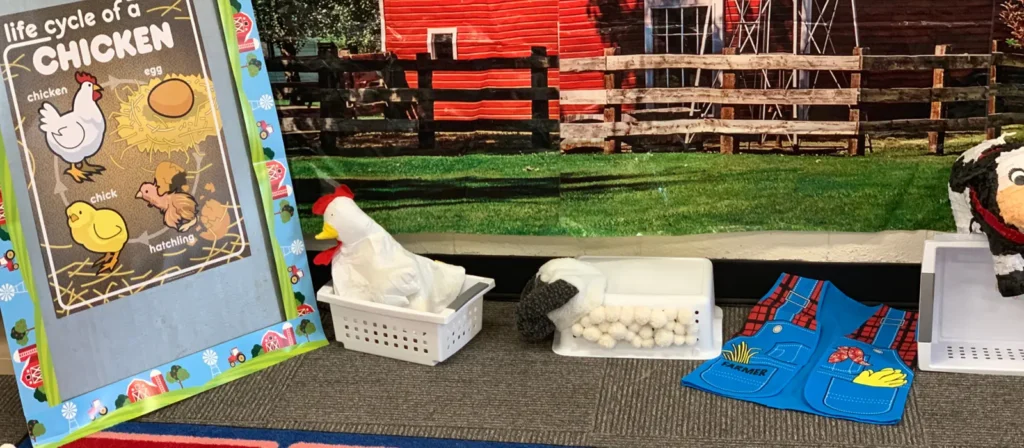
6. Incorporate Art, Songs, and Dramatic Play
Creative activities help children remember what they learn. They can make paper plate life cycle wheels, create chick crafts using cotton balls, or sing songs about the stages of a chicken’s life. Role-playing as chickens or farmers during opera drammatica sessions also reinforces sequencing skills, vocabulary, and cooperative learning in a fun and active way.
7. Connect Learning to Real-Life Experiences
Whenever possible, provide real-world experiences to enhance classroom learning. Hatching eggs in an incubator, visiting a local farm, or watching a live hatching video helps children make strong emotional and cognitive connections. These experiences also teach responsibility, empathy, and the importance of observation in science.
- Begin with fertilized eggs and track their 21-day development.
- Let students record daily observations in a life cycle journal.
- Use candling (shining a light through the egg) to view the embryo’s growth.
Tip: Always follow your school’s guidelines for live animal projects.
8. Integrate the Topic Across Learning Centers
A strong chicken life cycle unit can touch every part of the classroom. This not only deepens understanding but also reinforces vocabulary and makes learning more meaningful. Try the following cross-center integrations:
- Art Center: Invite children to draw or paint the stages of the life cycle, make fingerprint chicks, or build nests from natural materials.
- Dramatic Play: Set up a chicken coop play area with baskets, fabric eggs, and stuffed chicks. Add aprons, labels, and notebooks for pretend “farmers” or “chicken keepers.”
- Math Center: Use chick counters for simple addition, egg carton sorting activities, or sequencing puzzles with numbered life stages.
- Literacy Center: Add themed books, vocabulary cards, and tracing sheets with words like “egg,” “chick,” and “hatch.” Children can also dictate a story about a chick’s journey and illustrate each page.
9. Reinforce Learning with Review and Reflection
Conclude the unit by reviewing the stages of the life cycle together. Use sequencing cards, life cycle posters, or group storytelling to help children recall what they have learned. Encourage them to describe the process in their own words or draw the stages from memory. Reflection activities allow teachers to assess understanding and build children’s confidence in their knowledge.
Materials and Toys to Teach the Life Cycle of a Chicken
To support children in understanding the life cycle of a chicken, educators need materials that are both scientifically accurate and developmentally appropriate. The following resources combine hands-on engagement with educational value. They help preschoolers visualize and internalize the changes that occur from egg to adult chicken.
1. Chicken Life Cycle Figurines
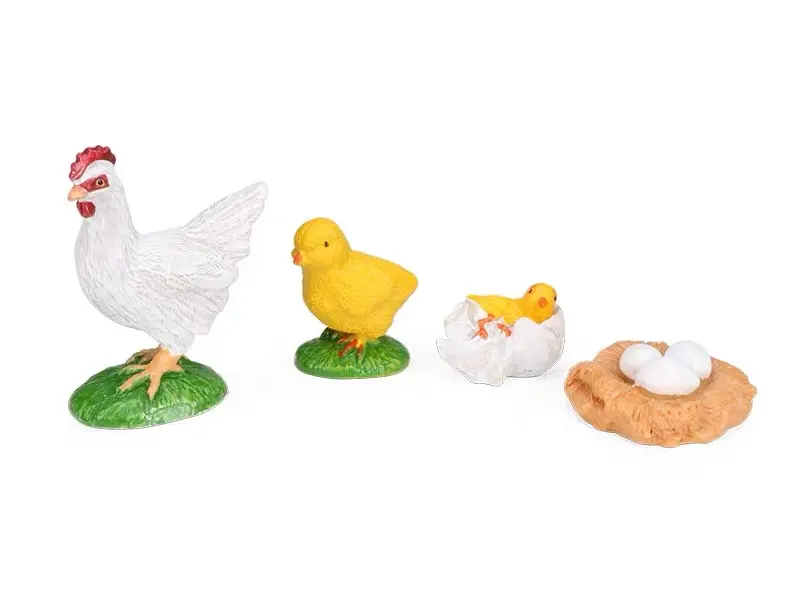
Plastic chicken life cycle models that show each stage of a chicken’s development are one of the most effective tools. These sets typically include an egg, an egg with a crack, a chick emerging, a fluffy chick, and an adult chicken. Children can touch, sequence, and retell the cycle using the figures.
Children can physically manipulate the life cycle in their hands, improving their understanding of progression and vocabulary. Figurines support visual learning and independent retelling of the cycle.
2. Chicken Life Cycle Felt Board and Magnetic Chart
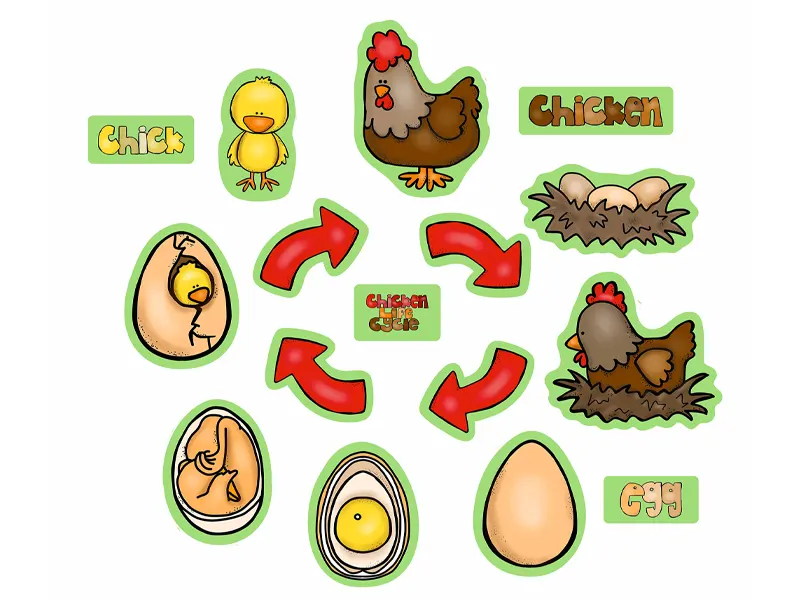
This reusable magnetic board features detachable pieces that show each stage of the chicken life cycle along with labels and arrows for sequencing. It’s perfect for interactive group work or teacher-led demonstrations during circle time. Children can place the pieces in order, match vocabulary cards, and retell the cycle with guidance. The visual format enhances comprehension and memory.
Display on a whiteboard or magnetic easel during circle time or small group lessons. Teachers can remove stages for children to reorder, name, or describe as part of review games.
3. Chicken Life Cycle Puzzles
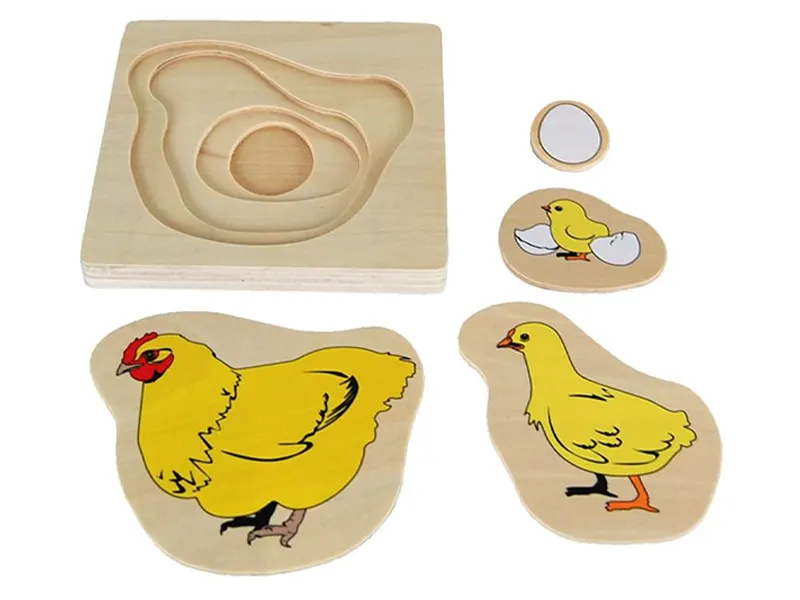
This multi-layer puzzle visually represents each stage of the chicken’s development, from egg to adult hen. Children lift and replace pieces in order, reinforcing sequencing and fine motor skills while building vocabulary. Its tactile nature helps learners internalize the cyclical nature of life and remember the stages more easily.
Use the puzzle as part of a storytime activity by narrating the chicken’s journey as students place each piece. Pair it with real-life photos of each stage for comparison, or invite children to draw their own chicken life cycle diagrams after completing the puzzle to reinforce comprehension.
4. Egg Anatomy Wooden Model Puzzle
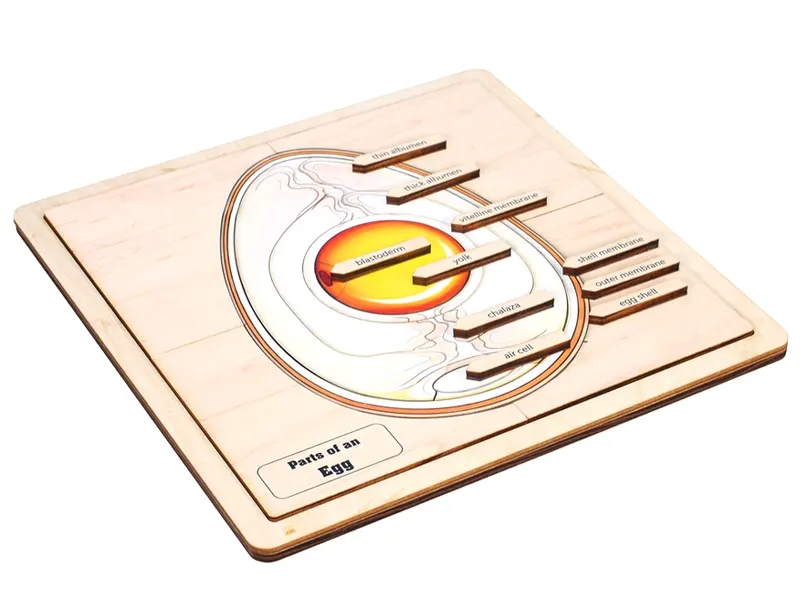
This educational wooden model provides a detailed, hands-on view of the internal structure of a chicken egg, making it an excellent teaching tool for exploring the early stages of the life cycle. Each part is labeled with movable tags, helping children visually connect terms with their locations and functions inside the egg. The realistic cross-section encourages curiosity and supports vocabulary development, making complex biological concepts more understandable for young learners.
Use this model during a science lesson to introduce the internal anatomy of the egg before hatching. Invite children to match the labels to their correct positions as a group activity or quiz. You can also extend the lesson by discussing the function of each part — for example, how the yolk provides nutrients or how the air cell helps the chick breathe before hatching.
5. Life Cycle of a Chicken with Tray and Cards
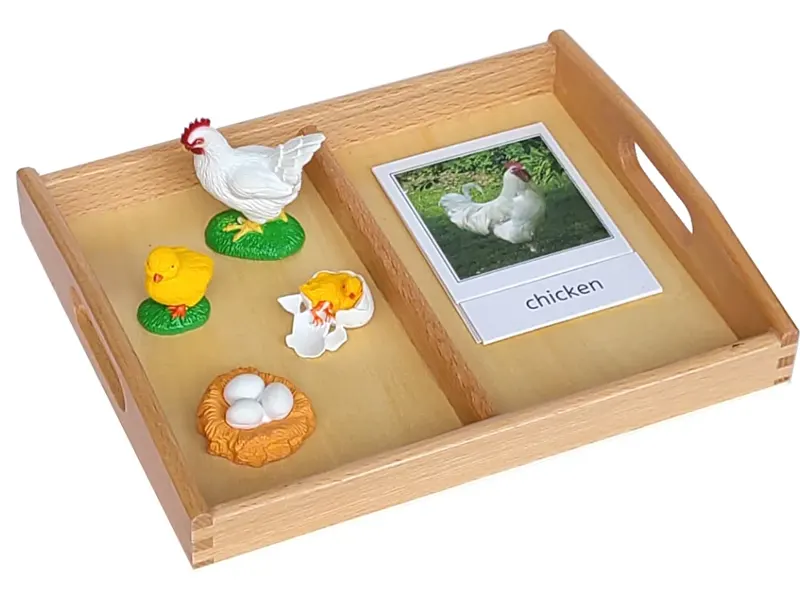
This Montessori-inspired learning set is designed to help young children explore and understand the complete life cycle of a chicken in a tangible and interactive way. It includes realistic figurines representing each key stage, along with matching photo cards that strengthen visual recognition and vocabulary skills. The hands-on materials make abstract biological concepts more concrete and support early science learning and sequencing abilities.
Use the set during tempo del cerchio to guide children through the chicken life cycle step by step, allowing them to place each figure in order while discussing what happens at each stage. Combine the figurines with the matching cards in a sorting or labeling activity to reinforce stage names and spelling.
6. Storybooks and Illustrated Guides
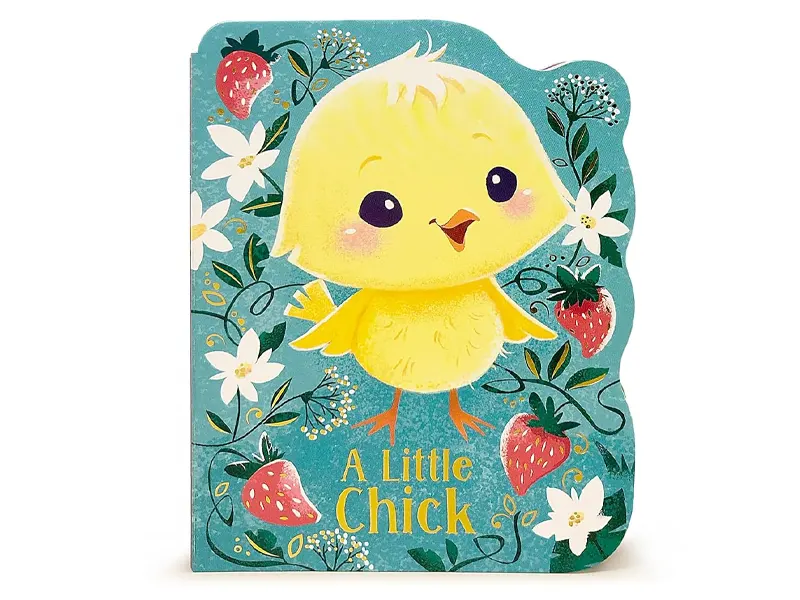
Children’s books focused on the life cycle of a chicken enrich the learning experience with narrative context and vocabulary exposure. Titles that combine scientific accuracy with engaging storytelling help connect factual content with real-world meaning. Pairing books with hands-on materials deepens comprehension and makes the topic more memorable.
Recommended titles include:
- Where Do Chicks Come From? by Amy E. Sklansky
- From Egg to Chicken by Gerald Legg
- National Geographic Readers: Chickens by Jennifer Szymanski
7. Hatching Egg Manipulative Kit

Children’s books focused on the life cycle of a chicken enrich the learning experience with narrative context and vocabulary exposure. Titles that combine scientific accuracy with engaging storytelling help connect factual content with real-world meaning. Pairing books with hands-on materials deepens comprehension and makes the topic more memorable.
Keep a daily observation journal where children record what they see, draw predictions, and note temperature and humidity changes. After hatching, integrate math by tracking growth over time or literacy by writing stories from the chick’s point of view.
La tua classe perfetta è a un clic di distanza!
Fun and Educational Activities to Teach the Life Cycle of a Chicken
Preschoolers learn best when they are actively involved in the learning process. Fun, hands-on activities turn the life cycle of a chicken from a simple science lesson into an exciting discovery experience. These activities promote observation, sequencing, language development, and problem-solving while keeping children engaged and curious about how life grows and changes.
- Chicken Life Cycle Sequencing Game
Create cards or cutouts showing each stage of the chicken life cycle: egg, embryo, hatching, chick, and adult. Invite children to place them in the correct order during circle time or small group work. This activity strengthens sequencing skills, reinforces vocabulary, and builds a clear understanding of the growth process. - Storytelling with Life Cycle Props
Use puppets, felt board pieces, or figurines to tell the story of the chicken life cycle. Children can participate by moving the pieces as the story progresses, which supports comprehension and language development. Retelling the story later helps them remember key details and stages. - Egg Observation and Drawing
Provide hard-boiled eggs or empty shells and let children observe them closely with magnifying glasses. Ask them to describe what they see and draw their observations. This activity builds observation skills and introduces scientific vocabulary like shell, yolk, and albumen. - Chick Craft Project
Guide children in creating their own chicks using cotton balls, paper, and glue. As they work, discuss which stage the chick represents and what happens before and after. Creative activities like this help children internalize scientific ideas while expressing themselves artistically. - Life Cycle Wheel Craft
Give each child a paper plate divided into sections, with each section representing a stage of the chicken’s life. Children can draw, label, and decorate each part, then spin the wheel to review the cycle. This hands-on project combines science, art, and literacy skills. - Sensory Bin Exploration
Set up a sensory bin with toy eggs, straw, small plastic chicks, and nests. Encourage children to explore freely, sort the objects, and act out the chicken life cycle with the materials. Sensory play deepens understanding through tactile experiences and encourages creative thinking. - Dramatic Play “Chicken Farm”
Transform part of the classroom into a pretend chicken farm with nests, toy eggs, and costumes. Children can role-play as hens, chicks, or farmers, practicing new vocabulary and reinforcing their understanding of the life cycle stages.
Conclusione
Teaching the life cycle of a chicken offers young children a meaningful way to explore science and the natural world. It introduces essential concepts of growth, change, and reproduction in a way that is clear, hands-on, and exciting for preschool learners. Through observation, storytelling, art, and exploration, children strengthen sequencing skills, build vocabulary, and develop curiosity while forming a deeper understanding of how living things grow.
To make these lessons even more impactful, Xiair World provides a wide range of educational toys, classroom materials, and science tools designed specifically for preschool programs. These resources, including puzzles, life cycle models, observation kits, and hands-on learning materials, give teachers the support they need to create engaging and developmentally appropriate science experiences.
When children explore the life cycle of a chicken with their senses and imagination, they do more than learn scientific facts. They begin to see patterns in nature, understand how living things grow, and develop a lifelong curiosity about the world around them.

